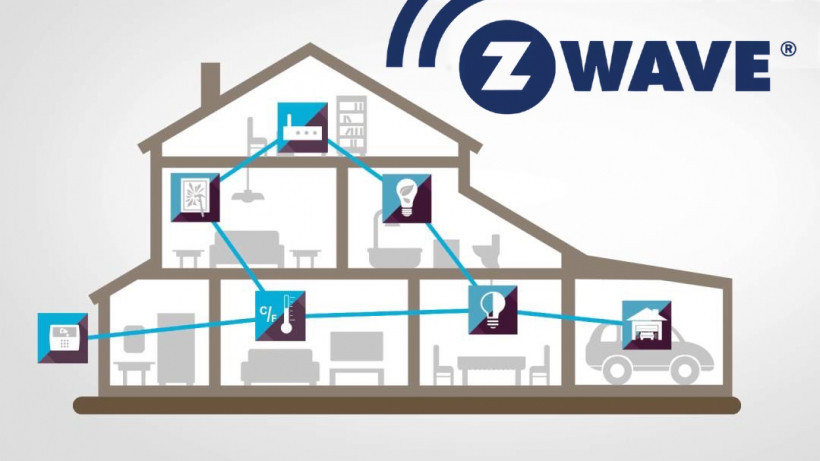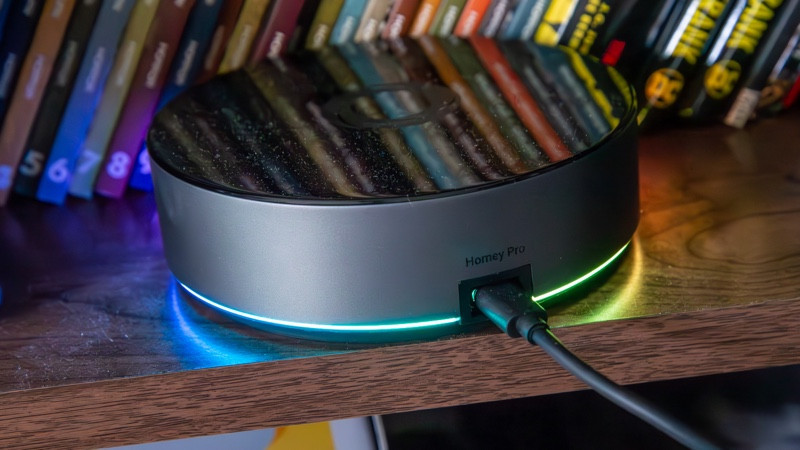
Everything you need to know about the Smart Home Wireless Standard
If you have stock at the Top Smart Home Kit, you’ve probably noticed the Z-Wave logo on many of the boxes on connected devices. And you say to yourself, “What is Z-Wave?”
If so, you’ve come to the right place. Here we will explain exactly what Z-Wave is, why it is important, and what you need to know when setting up a smart home.
So, what exactly is Z-Wave?
Z-Wave was born in 1999 from the idea of the Danish company Zensys. I came to the United States in 2002. Like Zigbee, Z-Wave is a wireless protocol that essentially focuses on connections within a smart home.
be patient: What is Zigbee?
As smart homes explode in popularity, more and more connected devices are being added to people’s homes. Many of these devices pack into Z-Waves to discuss each other, including sensors, bulbs, heating controls, locks, plugs and more.
In fact, smart homes around the world have over 100 million Z-Wave devices, with over 4,500 certified Z-Wave enabled devices to choose from.
Although it is a much lower power alternative to Wi-Fi, over a much larger range than Bluetooth, Z-Wave uses low-energy radio waves to communicate from device to device.
Also, note that another protocol called threads is set up to play a major role in the future of smart homes as the Smart Home Ecosystem remains intact.
What is Z-Wave Plus?
You may have seen the phrase “Z-Wave Plus” used in modern smart home devices. Essentially, it was a major upgrade to a platform that went up a few years ago, but it looks great on the marketing material.
The Z-Wave Plus, aka Z-Wave 500 series, uses technology launched in 2004, adding more range, extended battery life, OTA upgrades, additional RF channels and more.
If you’ve recently purchased Z-Wave products, modern Z-Wave devices will work with 700 series hardware, but are more likely to be Z-Wave Plus.
The Z-Wave Plus V2 certification program is the latest version. It includes an expanded S2 security framework and setup features that allow for true plugging and playing of consumer smart homes.
The Z-Wave 700 series, which was actually released in 2019, tasted things even more, lasted longer, with less power 64% used, and far better memory and processing power.
The Z-Wave 800 series is actually the latest framework, adding range, battery life and security updates. However, there are a few dongles and hubs running on modern platforms, but it will take some time before we see mass adoption from device manufacturers.
Z-Wave operates for a moment in the 800-900MHz radio frequency range, but the only reason I care about this is that unlike Zigbee, which operates at 2.4GHz (the main frequency of Wi-Fi), Z-Wave does not suffer from major interference issues.
The actual frequency at which Z-wave devices operate depends on the country in which they are used. For example, the US uses 908.40, 908.42, and 916MHz. Meanwhile, the UK and Europe use 868.40, 868.42, 869.85MHz. Therefore, it is important to make sure you are purchasing a Z-Wave device designed for your area.
Showdown: Zigbee vs Z-Wave, what’s the difference?
Unlike Wi-Fi, where devices need to connect to a Centrals hub (usually a router or another access point), Z-Wave devices all link to form a mesh network.
The central smart home hub used to manage Z-Wave devices connects to the internet, but the device itself (sensors, bulbs, etc.) does not have any Wi-Fi at all, so it uses a Z-Wave connection to communicate with the hub. Mesh network means that signals can hop from device to device.
The technical term is “source-routing mesh network topology.” If you want to impress your peers, paste it into your locker.
Not all Z-Wave devices can repeat the signal, but some Z-Wave devices can only send their own signals. For this reason, Z-Wave repeat customers are popular. Essentially, a “always on” main equipped device, such as a smart plug that can receive and send signals back to the hub from another node.
What is Z-Wave LR?

Z-Wave Long Range will likely make repeat customers a thing of the past. The Z-Wave Long Range, announced in September 2020, promised a wireless range up to four times more than a regular Z-wave signal.
A maximum of 232 nodes can be used for a standard Z-Wave mesh network. This is 232 devices for you and me. It’s far from the over 65,000 nodes available on Zigbee, but I think it’s still enough for all Z-Wave packing smart home kits.
Z-Wave LR is heading in the right direction as it hits this on up to 4,000 nodes on the network.
The Z-Wave Long Range promises a much better reach than the regular Z-Wave, which is limited to 100m per “hop.”
The ZWLR has specifications that can support up to several miles, according to the Z-Wave Alliance, and the first implementation from Silicon Labs has demonstrated a one-mile transmission range.
Unlike a regular Z-Wave mesh network, ZWLR devices function within a STAR network topology. The ZWLR device has a central gateway/hub serving as the focus, facilitating a direct point-to-point connection with the end device.
This configuration ensures streamlined communication paths and significantly reduces latency between the gateway/hub and the endpoint.
Z-Wave LR Socs (on-chip systems) can also make the mesh network even stronger as they are hard to attach to furniture and reach places inside walls, etc. And the good news is that Z-Wave is completely backward compatible. So the new long distance devices will work just like devices from several years that have been released in the future.
Called “the most secure and secure ecosystem of smart devices on the global market,” Z-Wave uses the same AES-128 symmetric encryption as Zigbee. It’s not entirely hackproof (what?), but most smart home vulnerabilities depend on the device’s software login procedure, not the connectivity.
At CES 2025, the Alliance revealed that there are more than 100 certified Z-Wave long-range devices now available, including Shelley’s new line of ZWLR smart home gadgets.
So far, ZWLR was purely for the US, but the specifications for the European market (including the UK) have been completed and will be available to member companies in future releases.
Who uses Z-Wave?

A big win for Z-Wave is that its devices are fully interoperable. All Z-Wave devices work with other Z-Wave devices without exception. This falls on the Z-Wave Alliance, owned and maintained by private organizations.
Sigma Designs purchased Z-Wave from Zensys in 2009, and Silicon Labs recently acquired the business for $240 million cool, and is responsible for signing off to Z-Wave Certified Devices software and hardware.
The Z-Wave Alliance currently has over 700 members and has over 4,500 certified products from these brands around the world.
There is an astounding 100 million devices on the market with Z-Wave inside. This covers 70% of the smart home market.
With Z-Wave Alliance Status of the 2023 Ecosystem Report It has been revealed that the most popular Z-Wave devices are:
- Smart Water Shut-off Valve
- Smart Security System
- Smart Home Control System
- Chair or DED Pressure Sensor
- Flood sensors and/or leak detectors
future
The big news about Z-Wave over the past few years is that Z-Wave Alliance is now a Standard Development Organization (SDO), opening a Z-Wave network layer and communications protocol for the Z-Wave specification, meaning the freedom of the Z-Wave Alliance.
“It was the process of getting there, and the first process was to generally acquire the Z-Wave Alliance and Z-Wave as independent platforms away from the Silicon Lab. You can imagine that was a considerable effort. We actually achieved that in eight months.
“The next step is to create a Z-Wave Open Stack, which allows other silicon companies to jump in.”
Z-Wave: Should I care?
The good thing about Z-Wave is that it definitely makes your smart home setup more seamless, but you don’t really need to do anything to make the most of it. Z-Wave devices will find each other at your home and create a more powerful mesh network. It’s also up to you if you want to use the app or hub above to take things further by linking different brand kits.
The rise of big-name smart assistants built into speakers such as Amazon Echo and Google Home, thankfully, means that you don’t have to worry too much about the protocols your smart devices are running. There are several advantages to running all devices on the same protocol – a single app is a big hit, but in reality it’s very unlikely, especially considering how low the low power Z-Wave is. For example, it’s not good for HD video on security cameras.
So, it’s a good idea to look for Z-Wave certified stickers in your box, but there are always other ways to play your connection kit well on different platforms.
Thanks to the Matter Smart Home initiative, there is a huge change in communication and compatibility.
Z-Wave and Matter
From the outside, it may seem that Z-Wave could potentially sacrifice this shaking. This is not the communication protocol utilised by Zigbee, a long-term rival to Z-Wave, essentially a new guise of the Connectivity Standards Alliance.
However, Z-Wave does not view the issue as a thread, but rather seems keen on the prospects of a more interoperable smart home.
Bluesalve Partners Managing Partners Avi Rosenthal is currently chairman of the Z-Wave Alliance’s board of directors.
“Do I see the issue as a competition? I will definitely do that. Do I see the issue as an opportunity too? I will definitely do that.”
He believes that Rosenthal was keen to expand the olive branches into CSA in turn.
“We’re happy to help. We want to be part of the conversation,” he explained. “We don’t see it as our scenario and theirs. We see it as an opportunity for everyone to work together.”
Chairman Z-Wave said at CES 2025: “There is no technical reason why you can’t control or control a Z-Wave device: a threaded device, a Wi-Fi device, or a Bluetooth device.
Z-Wave Hubs and Apps

The Z-Wave Kit discusses each other across the network, but the internally burned system is still very independent and has its own apps and hubs. However, there are plenty of good Z-wave options, both hardware and software, to do everything under one roof.
On the hardware hub side, AEOTEC and Samsung Smartthings hubs do an amazing job of not only throwing all Z-wave devices together, but also offering cross-platform automation options as they are Zigbee compatible.
For specific Z-Wave Hubs, see Aeon Labs Aeotec Z-Wave Z-Stick (just connect to your PC’s USB port) or Vera Edge.
Due to the open nature of Z-Wave, many brands with Z-Wave kits have great apps that control not only their own native devices, but also third-party Z-Wave Tech.
Check out celebrities like Aeotec, Samsung, Insteon, Abode and more. However, consider Openhab, Homey, Zooz, Home Assistant Companion and Imperialhome as well.
Try z-wave devices
- Fivalo Flood Sensor
- Kwikset Obsidian Smart Lock
- Ring door/window sensor
- Oomi dual in-wall switch
- Logitech Home Harmony Hub Extender
- Smart lock in August
- Homey Pro
- Ezro Secure
- Zipato Bulb 2
- aeotec smartthings hub
- abode Gateway
- Yale KeyFree Connected
- d-link mydlink sensor
- Somfy ILT Series Blinds
- ADT Security Hub
- GE Lighting Control
Z-Wave FAQ
No, Z-Wave devices are very easy to install and connect without the need for an electrician. Simply pair the Z-Wave Hub.
absolutely. That’s the beauty of Z-Wave. As long as you carry Z-Wave badges, different brands will play together.
Security is Z-Wave’s priority. Especially with the latest Z-Wave 700 and 800 series with improved encryption to keep your smart home safe.
Not native, no – but you can always group Z-Wave and Matter devices with hubs that support both Homey Pro and Smartthings hubs.







